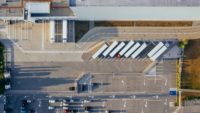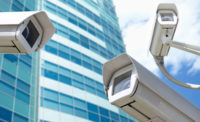Body worn cameras: The missing piece of critical infrastructure security

Image by lufeethebear via Freepik
Last year, the Colonial Pipeline incident highlighted the fact that critical infrastructure sites are under serious threat. The ransomware attack forced Colonial Pipeline to shut down its digital systems for several days, leading to fuel shortages and increased gas prices, which significantly impacted the transportation industry.
While a cyberattack caused this particular incident, the Cybersecurity and Infrastructure Security Agency (CISA) recently noted that cybersecurity and physical security are quickly converging, with digital threats often affecting the physical world — and vice versa.
Malicious, targeted attacks are not the only threat to critical infrastructure. Around the same time as the Colonial Pipeline attack, the Texas power grid suffered major outages amid a series of damaging winter storms, leaving millions of residents without power or heat when they needed it most.
The incident underscores the potentially deadly consequences that damage to critical infrastructure sites can have — and their relative vulnerability. Securing these sites must be a priority today — and doing so requires a robust surveillance solution capable of identifying a wide range of potential dangers, from hostile actors to faulty components.
One part of this solution that deserves greater consideration is body-worn cameras, which can play a major role in protecting both the infrastructure itself and the workers who man it.
Threats to both infrastructure and workers
Colonial Pipeline highlights the danger of a cyberattack, and the Texas outages underscore the danger of extreme weather. But these are just two examples of the myriad potential dangers that today’s critical infrastructure sites face.
Much of the infrastructure throughout the U.S. is poorly maintained, and aging. A recent study produced by the American Society of Civil Engineers (ASCE) reports that many systems are “increasingly susceptible to catastrophic failure” of the sort exhibited in Texas. Among the areas of particular concern to the ASCE are dams, levees, stormwater systems, and transportation infrastructures like bridges and subway tunnels. A significant failure within any of these systems could have disastrous results.
While the ASCE pointed out these areas of weakness, they are hardly alone. Water treatment facilities, refineries, electrical grids, petrochemical plants, manufacturing plants, oil rigs, and other infrastructure sites face a wide range of unique security challenges. And given that many of these facilities deal with heavy machinery, are in remote locations, or both, keeping workers safe can be a great challenge.
According to a recent AFL-CIO report, workplace hazards kill and disable more than 125,000 workers yearly, including nearly 5,000 from “traumatic injuries.” Any comprehensive security solution must prioritize keeping those workers safe as well.
Comprehensive security surveillance
Gone are the days when “video surveillance” was simply a bank of wall monitors observed by security personnel. Internet protocol (IP) cameras have replaced older analog cameras, and these connected devices can be viewed and controlled remotely.
New devices have emerged over the years, and today a comprehensive security strategy might consist of both thermal and visual cameras, radar devices, access control stations, audio equipment, and analytics software. The uses for this technology are obvious — the ability to identify potential intruders, even in near-total darkness, is a major part of keeping a facility safe.
Radar can track movement, audio can detect sounds like breaking glass, and analytics can perform an ever-growing range of functions that once seemed like science fiction.
But people are a major part of the equation at any worksite, and critical infrastructure is no different. Any “comprehensive” approach must also account for this — yet body-worn devices remain vastly underutilized. Body-worn cameras are often associated most closely with their law enforcement applications, but the truth is that they can be used in various ways. When it comes to critical infrastructure, those use cases can help provide an added degree of physical security throughout the premises.
Used within a broader network of surveillance cameras, body-worn cameras can provide security personnel with a better view of what is happening on the ground. In an emergency, this insight can be valuable for decision makers who may be at a command center hundreds — even thousands — of miles away.
In a non-emergency situation, close-up footage from hazardous or restricted areas can help organizations identify potential maintenance issues, which can then be proactively addressed. Sometimes identifying a mechanical issue is as simple as hearing something that doesn’t sound quite right — and today’s devices can detect those issues more easily.
Imagine a maintenance worker inspecting a pipeline site — a body-worn camera might identify signs of a faulty or damaged part that human senses alone are not capable of detecting, thereby averting what could otherwise result in disaster.
Video from body-worn cameras can also be reviewed to assess whether an incident was handled appropriately or to determine its cause. This retrospective evidence can help determine what may have precipitated a disaster or other unexpected event—or even simply to prove that sites are OSHA-compliant to avoid regulatory action.
Footage from body-worn cameras can also help organizational leaders assess processes, determine best practices, and aggregate both positive and negative footage for use in employee training.
And of course, body-worn devices can also serve as a deterrent to violence in the event that an intruder is detected on the premises. At worst, they can help identify the perpetrator after the fact.
Body-worn devices are an essential security solution
Whether your primary concern is malicious action or mechanical failure, body-worn cameras are an essential part of securing critical infrastructure sites. They play an important role in detecting and deterring trespassers and would-be saboteurs while helping security leaders and decision makers get an up-close and personal view of what is happening on the ground.
As part of a larger network of cameras and sensors, body-worn cameras provide an efficient and cost-effective way to improve the detection of potential maintenance issues before they can become emergency situations, or help diagnose the cause of an emergency so it can be avoided in the future.
As organizations look for ways to keep critical infrastructure sites more secure, body-worn devices are emerging as an important part of the solution.
Looking for a reprint of this article?
From high-res PDFs to custom plaques, order your copy today!





